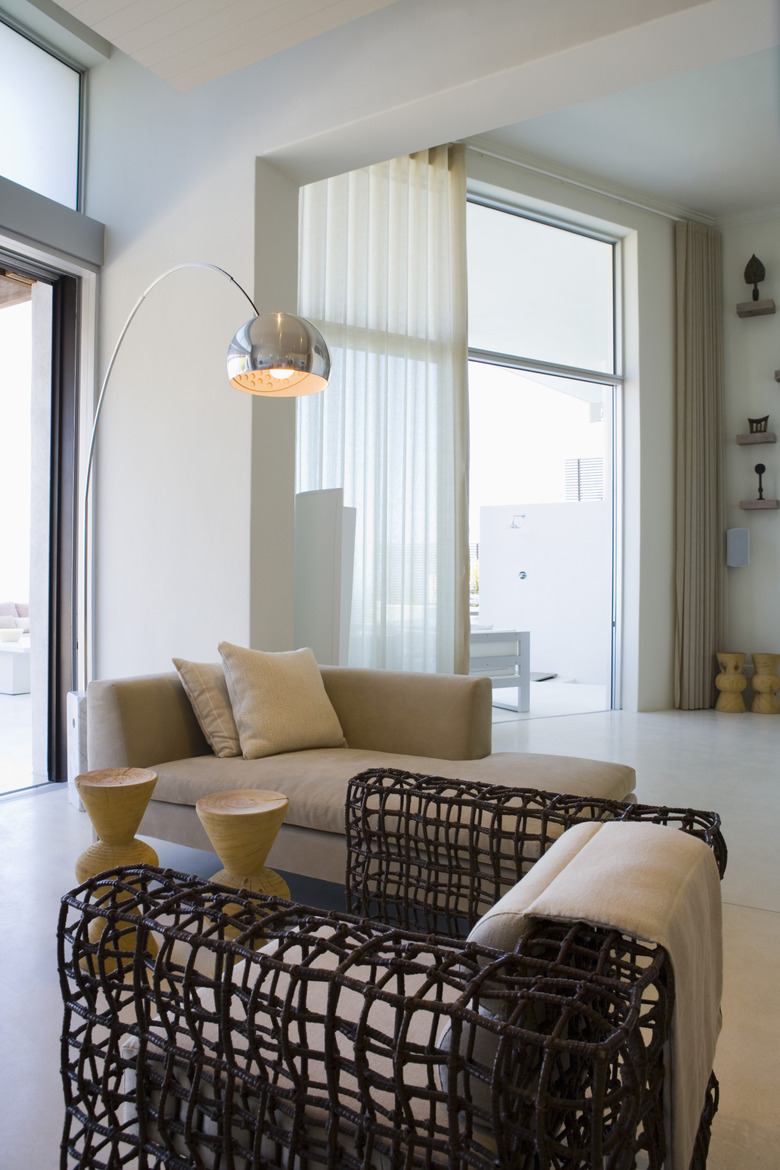How Should A Bulkhead In The Home Be Painted?
A bulkhead is often necessary in the building of a home, but it may create problems when the time comes to paint. Understanding a few interior design guidelines will lead to success in choosing the correct paint color. Some large paint companies provide online programs that allow the user to upload a picture of a room and re-color the walls.
Camoufage the Bulkhead
Camoufage the Bulkhead
You have three ways to deal with an architectural detail, such as a bulkhead, that is not welcome: Change it, ignore it or camouflage it. Changing a bulkhead could involve a large remodel; ignoring it is not an option because it must be painted at some point. Camouflaging with paint will reduce the prominence of the bulkhead and allow the real focal point of the room to remain foremost — the picture window or the fireplace, for example.
The design guideline at work here is that the eye will go to the area of greatest contrast first. If the bulkhead color contrasts with the surrounding wall, it could become the focal point of the room, which may be the desired effect — but chances are it is not. For example, ceiling-height wallpaper borders demand visual attention and take the viewer's eye to the ceiling, not to the interior of the room. A bulkhead painted a contrast color will have the same effect on a viewer.
Paint the Bulkhead as the Ceiling
Paint the Bulkhead as the Ceiling
If the bulkhead is short in depth (less than 6 inches), paint the bulkhead the same color as the ceiling, which may have the effect of shortening the perceived wall height if the walls are less than 8-feet tall, in which case paint the bulkhead the same color as the walls. Paint the underside of the bulkhead the same color as the ceiling.
Paint the Bulkhead as the Wall
Paint the Bulkhead as the Wall
When the bulkhead is more than 6 inches deep, paint it the same color as the wall on which it resides, which will help to negate the contrast in shape and create the illusion of one flat surface. Paint the underside of the bulkhead the same color as the ceiling.
Current Trends
Current Trends
Ceilings are traditionally painted white, but the current design trend is to paint the ceiling a lighter version of the wall color, which will blur the lines of the ceiling to the wall and create the illusion of taller walls and larger rooms. The visual effect of bulkheads is less in rooms with this paint scheme.
A Coffered Alternative
A Coffered Alternative
A shallow bulkhead could be considered the start of a coffered ceiling if a remodel is possible. Replicating the bulkhead on the three remaining walls will put the room in balance architecturally. If the room style is traditional or formal, a coffered ceiling could become a focal point, in which case textures and contrast colors could be considered. If the room is modern, or contemporary, less is more and the coffered ceiling would be painted to blend to its surrounding walls.
